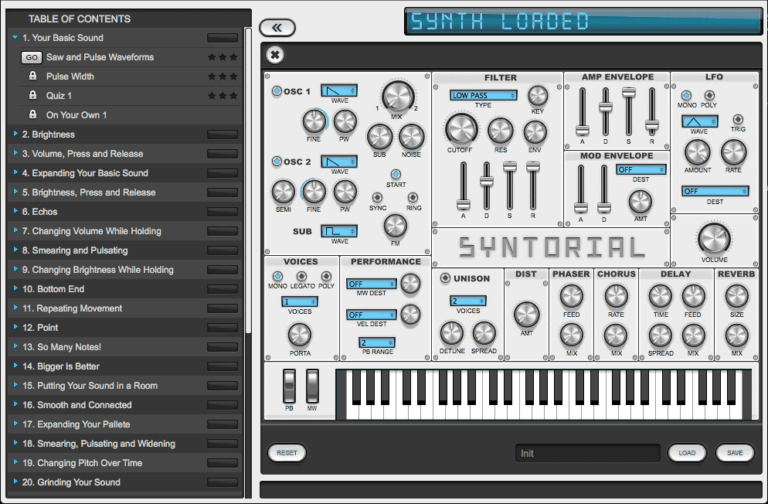
The campaign garnered $8,614, succeeding its $5,500 goal. I went looking for a product like this, it didn't exist, so I made Syntorial."Īfter making the prototype, Hanley held crowd-funding for Syntorial on Kickstarter from August 23 to September 22, 2012. It occurred to me that what I needed was in-depth ear training involving synth-based sound design. Despite the fact that I intellectually understood what most of the controls did, I still felt like I was at the mercy of whatever synth was in front of me. I was either spending a lot of time browsing through presets, or a lot of time tweaking knobs in a trial-and-error fashion. "I've been a gigging keyboardist and a producer for many years and as I honed the many skills involved in these activites, when it came time to use a synth. He was inspired to make Syntorial based on his struggles of learning musical synthesis:
Syntorial review professional#
DevelopmentĪ 2003 graduate of the Berklee College of Music, Joe Hanley had been a professional musician for 17 years, a teacher for nine years, and a composer for six years before he began work on Syntorial.
Syntorial review mod#
Syntorial uses controls and features that are the most common in many synthesizers, including subtractive synthesis, three oscillators, saw, pulse, triangle and sine waves, an FM parameter, noise oscillator, oscillator sync, band-pass filter with resonance and key tracking, ADSR envelopes, an AD modulation envelope, LFO, monophonic and polyphonic voice modes, portamento, unison with voice, detune and spread controls, ring modulation, distortion, chorus, phaser, delay, reverb, mod wheel, pitch wheel and velocity.

Once the user finishes all the lessons, he/she will have programmed 706 patches. A total of 39 quizzes are included in-between lessons. As the user progresses, more controls are added in each topic. Once the user corrects the mistakes, they can try the challenge again or move on to the next lesson.
Syntorial review Patch#
After the user is done programming the sound, they will submit the patch to the program, with the user shown what controls they used correctly and what controls they used incorrectly.

Each lesson starts with a video lecture teaching a control or a group of controls, followed by a challenge a patch is heard, but the user is not shown how the patch is programmed, so that they can try to program the patch to sound like the hidden patch. And again, things are abstract and minimal enough that you can transplant these skills in almost any DAW.Syntorial includes a total of 199 lessons and 129 interactive challenges, where the user programs sounds using a built-in synth called Primer. I would’ve been a big fan of this when I was starting out, and I could see myself getting a lot of value out of Building Blocks even now. I’m a big fan of going through as many courses as I can find, particularly ones about songwriting and Building Blocks levels 1 & 2 really cover a lot – from basslines and basic drum beats to arrangements, phrasing, different chords, and chord progressions – there really is a ton here to sink your teeth into.
Syntorial review free#
I only tried the free trial, but looking through all the available lessons, that’s a lot of knowledge.

The original Syntorial was great at teaching you to program, listen, and understand what each change sounds like.Īnd until June 16th, you can buy both levels for only €29, which is pretty crazy. If you remember how weird and alien piano rolls, punching in blocks of MIDI, velocity, and automation felt when you started out, this is exactly what Building Blocks teaches. But then again, that’s what I thought when I first heard about Syntorial.Īlright, so check this out – Building Blocks is an abstracted course that teaches the already abstract visual language that DAWs use and how they deal with music melody, harmony, rhythm, and more advanced music theory. Well, turns out they weren’t just sitting around twiddling their thumbs but were hard at work at something so ambitious, it might be a little insane. I was pretty sad to see that, year after year, nothing else would come out from the company. I tried it out when it came out, and even though I never finished it, it was pretty mind-blowing how easily and how fast things stuck. See also: Spitfire Audio Releases FREE LABS Bass GuitarĪnd if you’re not familiar, Syntorial essentially walked you through 99% of the controls you’ll need to program a synth properly and confidently in a vast number of in-depth lessons.


 0 kommentar(er)
0 kommentar(er)
